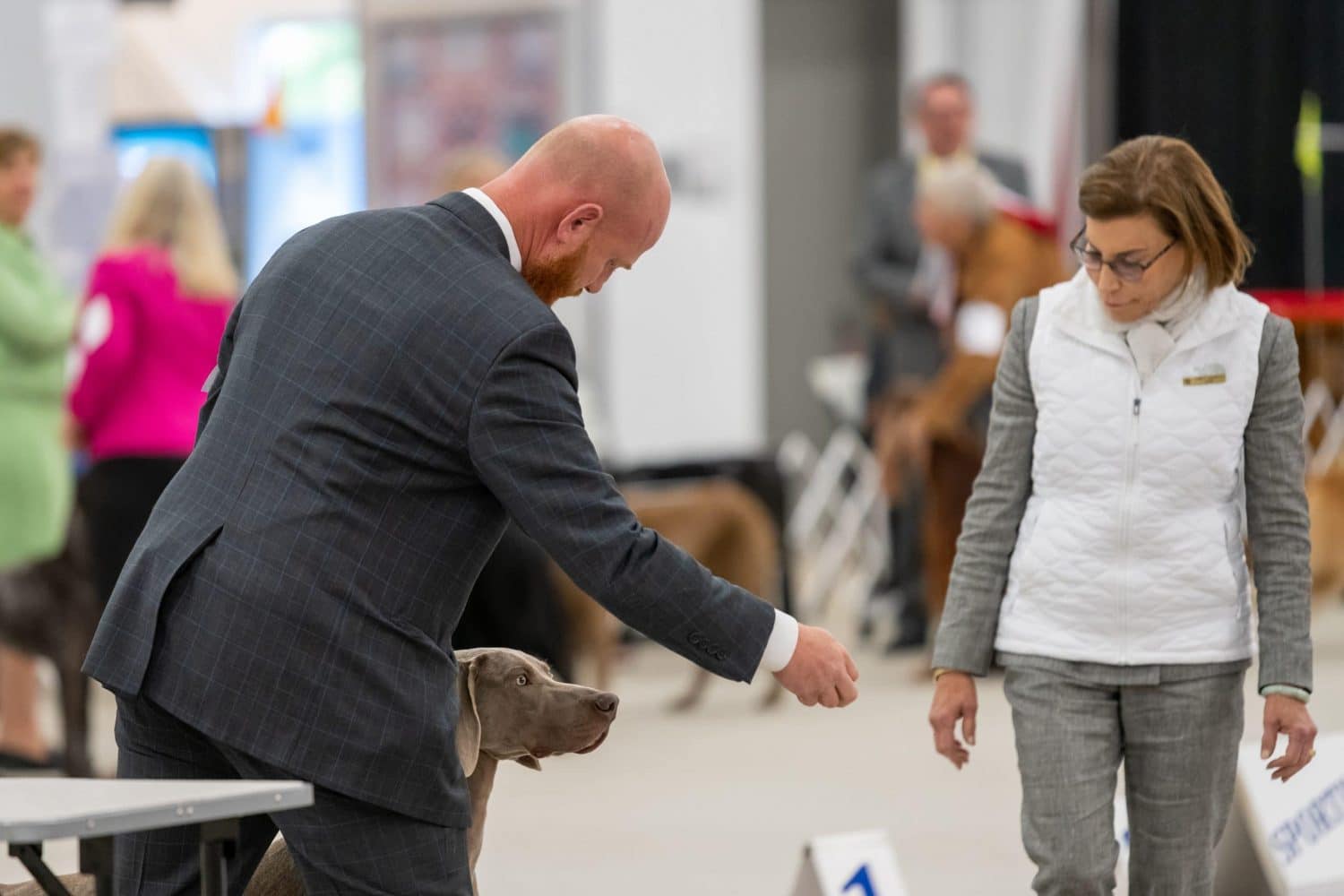We are on the verge of a new year and, after 2020, I am sure we are looking forward to some type of return to normalcy.
We have just survived a year in which so many things have happened. Debates and bad behavior have become more of the norm than the rare occurrences of the past. We live in a divided country and a world in which people do not seem to respect those who may have different views and ideologies from their own. Lack of respect does not only occur in the world of politics, but also in many other facets of our lives. Recently, our sport (as well as our ability to hold shows and trials) has suffered in too many ways to count.
Everyone in this country is entitled to his or her own opinions; it is one of the great protections of our constitution. Free speech is what makes America so unique and the envy of many other countries in our world. But free speech also has its victims as some people do not consider the harm they may be causing others by their comments, tweets, posts, and the like.
Nowhere in our sport, it seems, does expressing one’s opinion show up more than in the critiquing of the judging community. I always tell new judges that once they start officiating they need to grow a thick skin because, no matter what they do, the critics will be plentiful and not always kind.
This is not about pointing fingers at anyone. Rather, it is about respecting our sport and everyone involved (before we get to the point where we destroy it for any newcomer due to the behavior they see within the sport).
I started my journey in this sport of purebred dogs in 1972. Looking back, I believe it was a time when our sport was in its prime. In those days we had a ton of sanctioned “B” matches, a place where breeders, novice exhibitors—and even the occasional professional—would take their youngsters to practice and hone their skills for the conformation as well as the obedience rings. Living in Northeast Ohio at the time, one could attend a match on most weekends within a drive of two to three hours; they were plentiful and a great place for the novice to learn. Matches were also a place where prospective judges would learn (through true hands-on experience) about the breeds they were considering judging. Since you entered the match in the morning and the judging would follow later in the day with no published schedule, judges and exhibitors had plenty of time to talk, teach, and learn from one another. When you talk today with people who have been around that long, you will find that we all have fond memories of those times. They not only taught us about our breed and our sport, but also about the value of different opinions and outlooks on various things going on in our sport at the time. The decline in these matches is a lost opportunity for newcomers to our sport as they were a great asset in preparing for the “Real Shows.”
In those days, we had many “colorful people” in the sport as both judges and exhibitors. We did not have access to the Internet, Facebook, cell phones, and the many forms of social media that we have today. Some of our judges in today’s world might be considered mean, gruffly, crooked, and many other adjectives, but one thing was absolute in all of those “old-timers”; they were “true” dog men and women who had devoted a good part of their lives to the sport, which in those days was more about producing and improving breeding stock than the race for the top dogs that we see today.
There is no doubt that we had people with huge egos and a desire to win at all costs, but decency and decorum ruled the day—for the most part. Even though our judges were very qualified, they each had certain tendencies that we all understood, even if we did not agree with them. The numbers of judges back in those days were significantly lower than what we see today. You might have seen certain judges in your area numerous times each year. Some judges would not tolerate bait of any kind in their rings and would even slap it out of your hand if you used it. We had “Tooth Fairies” who, if your dog’s teeth were not sparkling white, would dismiss you to the end of the line no matter how good of an exhibit yours was. Others would dismiss you if your dog soiled the ring. We also had many in those days who believed in a theory of “spreading it around.” For example, say you had numerous dogs entered in a specific breed and you went Winner’s Dog; no matter how good your bitch or special might be, those judges wanted to spread the wealth and would give the wins to other exhibitors. Many of these judges also recognized that there were numerous good specimens of breeds at the Group level. Most of us stayed in our local areas, so we competed regularly with the same dogs and handlers at almost every show. In those days, you might win the Group today under Judge “A” and, a few weeks later, not even place under the same judge because he or she felt it was someone else’s turn to be rewarded. We all had our favorites as well as those we did not like. What we did not have was the public trashing of judges that is seen everywhere you look on social media sites today.
A little while back, a few judges who have been judging for decades were discussing these so-called “Judges Report Cards” on various social media sites with a variety of different names. One of the most common reactions was that it seems exhibitors today do not care if the judges are genuine dog men and women who truly know and understand breed type and quality. They want judges who smile all the time, play nice with the unruly and untrained dog, and do not award the professional handlers regardless of the quality of dogs being exhibited.
Examples: (No names or shows are identified.)
“Report on Mrs. X who judged on (date) at (show). I have no concern over her choices, but her demeanor was very rude. She was curt with exhibitors. After judging, she broke for lunch and an exhibitor asked for a picture, but she said, ‘Not right now.’”
“Judge Mr. XYZ for Breed. Does he like black (substitute any color or pattern)? I am having trouble finding judges who don’t ignore my black dog.”
“I showed my nine-month-old puppy to Mr. X on Saturday at ABC Kennel Club. It was not a great experience for my boy. Mr. X took his face to check the bite and my boy shied away. Mr. X stopped the exam, had us do our down and back, and pretty much ignored us the rest of the ring time. I will not show under
him again.”
Response on opinions for Judge Z: “A big no. Heavy-handed, terrible with puppies, no patience, rude.” And in the same comments section, “Definitely looks at owner-handler; won a lot under him. He is quiet, and you have to really listen and pay attention. Nice hand on the dogs too.”
“They only use handlers on my do-not-show list.” Another post for the same: “Wonderful, knowledgeable, looks at all the dogs, very fair no matter who is on the end of the lead. One of my all-time favorites.”
I often think of something I was taught as a child. When you are angry and thinking of writing or saying something, write it down, then sleep on it and see how you feel the next day. The written and spoken words can last a long time and damage a relationship over a simple issue that is just silly in hindsight.
Some of these sites even show the person’s name, some with photos and other information that is easily accessible to all. It is OK to have an opinion, but some of these attacks are nothing more than sour grapes because they did not win. You rarely see, “My dog really misbehaved or was out of condition.” Or “Even though I did not win, the winners were deserving.” Or “Yes, the professional handler won, but he/she had a very good dog in great condition and presented properly.”
Most judges try to be kind and considerate. They are on their feet bending over and twisting and turning for, sometimes, 8-12 hours, with over 200 dogs a day when adding Groups. Handlers and exhibitors have a great deal of time to rest and take breaks during the day to recharge, whereas the judges are often worn out after a long day.
In one conversation, some judges wondered what would happen if the judges started some type of “exhibitors report card.” What might we see? Might it look something like this?
“He/she is first-class all the way, accepts wins and losses with grace, never complains or denigrates the competition. Always exhibits dogs in excellent and clean condition.”
“A vile and nasty person, never happy even when they win. Always runs down the competition and thinks he/she deserves to win all the time.”
“A great “user-friendly” person, always respectful. Wish he/she had better dogs.”
“A know-it-all. Been in the breed a year or two and thinks he/she knows everything.”
“Boy, could he/she use a bath, or some deodorant. The smell
is nauseating.”
“You would think they never heard of soap and water. I wonder what a bath and brush might do to make a difference in
that exhibit.”
“Do they not understand that all the extra time they take switching dogs and running back to crates takes time away
from everyone?”
“Always waiting for them to get in the ring because they are outside shooting the bull with someone when they should be in the ring.”
“Oh, this one’s a COVID-19 baby. That’s why he is being so bad, sorry.” (Translation: I was too lazy to train him when I had the time, so I am doing it in the ring.)
I am sure that if there were such a site there would be hundreds of far more colorful posts.
The point here is simple: We are all human beings sharing a common interest; our dogs. It does not cost anything to be nice to each other, but it also does not mean that just because you don’t like someone or the results at a show you need to run down or attack that person. Ask yourself, “How would I feel if they said or wrote that about me?”
We have enough negativity and rudeness in the world. Our shows should be a place filled with friendships and camaraderie. We should all try to make our New Year’s resolution to be nice to one another.
Happy New Year to everyone!









